Abstract
Türkiye’s vegetable production is diverse, with tomatoes and cucumbers being the major crops. In 2022 data, cucumber production was the largest at 1.94 Mt (million tonnes), occupying an important position in the country’s vegetable production. Tomatoes are also produced in large quantities, and while the majority are used for processing, the demand for fresh tomatoes is also stable and high. As a result of past trends, Turkey has a warm climate and vast farmland, making it an ideal environment for vegetable production. Especially along the Mediterranean and Aegean coasts, the warm climate is ideal for growing vegetables, and there is a wide variety of crops and harvest times. Additionally, tomatoes and cucumbers are highly competitive not only for domestic consumption but also in the export market. From the perspective of land use, the area planted with vegetables, mainly tomatoes and cucumbers, is large, with tomatoes in particular being cultivated on a large area, but production of eggplants, peppers and other crops also plays an important role. As farmland becomes more efficiently utilized, it is predicted that the cultivation of vegetables that are in high demand will continue to increase.
Production (by vegetables)
In Turkey’s vegetable production, cucumber has grown steadily between 1961 and 2022, reaching its highest production volume in 2022 at 1.94 Mt. Cucumbers in particular have maintained their peak production volume in recent years, and production volume is currently at a stable level equivalent to 100%. This stability can be attributed to the strong demand for cucumbers not only for domestic consumption but also in the export market. Looking back at data from the past few decades, Turkey’s vegetable production has shown a strong upward trend, especially in the Mediterranean and Aegean coastal regions, which are well suited to warmer climatic conditions. Cucumbers can be harvested in a relatively short period of time, allowing for efficient cultivation, which contributes to increased production. Additionally, increased domestic consumption and expanding exports are also contributing to the increase in production volume. However, other Turkish vegetables – such as tomatoes, eggplants and peppers – are also important crops and, alongside cucumbers, are major export items supplying international markets. The increased production of cucumbers has also had an impact on the stability of the production of these other vegetables, and demand for them is expected to remain stable in the future.
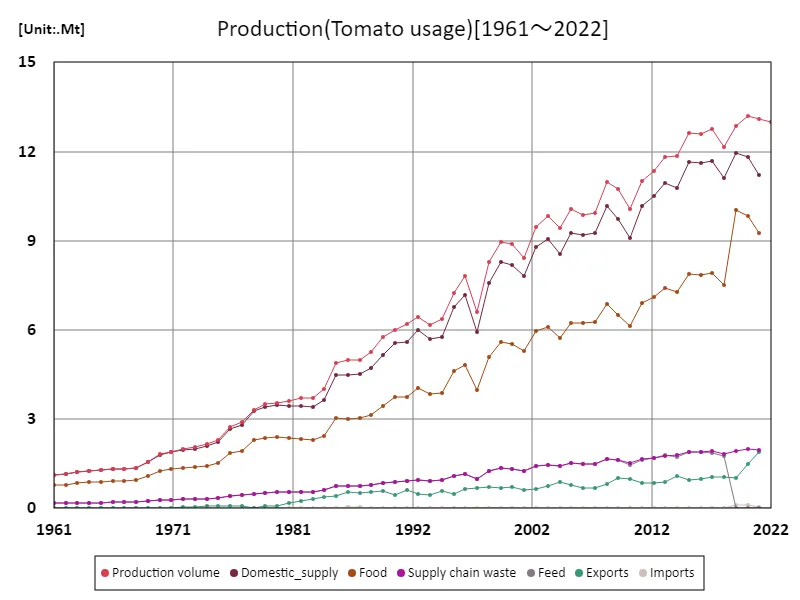

The maximum is 13.2Mt[2020] of Production volume, and the current value is about 98.5%
Yield(by vegetable)
Tomato continued to occupy an important position in Turkey’s vegetable production between 1961 and 2022, recording the highest production volume in 2022 with a yield of 81.9 t/ha. Tomato productivity is currently at 100% of its peak and is showing stable growth. Turkey in particular has a warm climate and vast farmland, making it an ideal environment for growing tomatoes, and the country boasts high competitiveness not only for domestic consumption but also in the export market. The increase in tomato yield is due to advances in cultivation techniques and agricultural infrastructure. Agricultural efficiency has improved, and improvements in irrigation systems and soil improvement techniques in particular have contributed to increased productivity. Furthermore, due to the warm climate conditions, tomato production is thriving in areas suitable for growing tomatoes, especially along the Mediterranean and Aegean coasts. In terms of uses for tomatoes, the demand for tomatoes for processing is particularly high. Turkey has a developed processing industry, and tomato paste and tomato sauce are exported as products that are in high demand on international markets. As a result, tomato production has stabilized and demand is predicted to remain strong in the future.
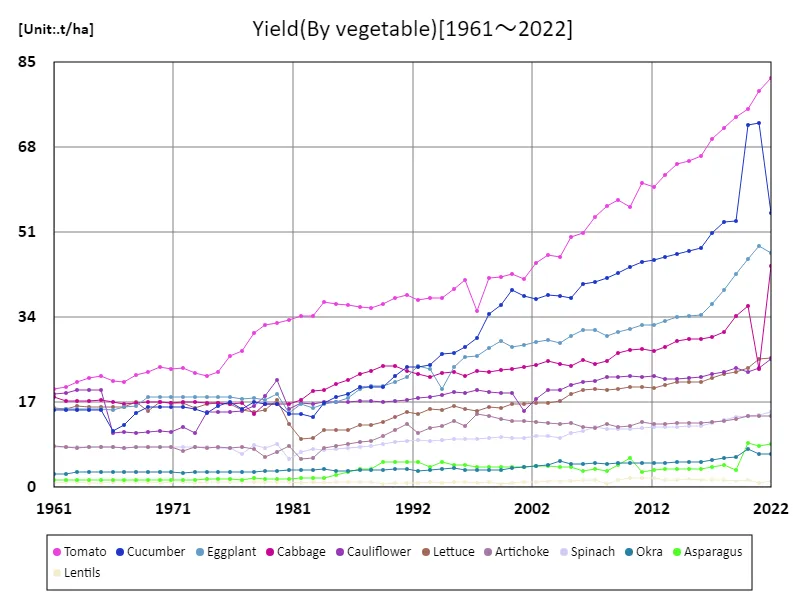

The maximum is the latest one, 81.9t/ha of Tomato
Land use (by vegetables)
In 2022 data, lentils accounted for the largest area of land use in vegetable production in Turkey, reaching 343 kha (thousand hectares), the largest area overall. Turkey is a major lentil producing country, and high demand and suitability for cultivation are influencing the expansion of land use. The average cultivated area is 57.6kha, and the total area is 633kha, showing that a variety of crops are cultivated, with lentils as the main crop. Looking at past trends, Turkey has made agricultural production more efficient, and has promoted land use suited to each crop. The reason why lentil cultivation has spread is that Turkey’s climate is suitable for dry and cold areas. Lentils also require relatively little water to grow, making production possible in areas with limited water resources. This characteristic has contributed to widespread land use, especially in arid regions. The fact that the area planted with lentils is significantly larger than that of other crops also shows its important position in Turkish agriculture. It is expected that land use will continue to be optimized in response to demand for lentils, and there is a possibility that efficient agricultural practices that combine lentils with other vegetable crops will become more widespread.
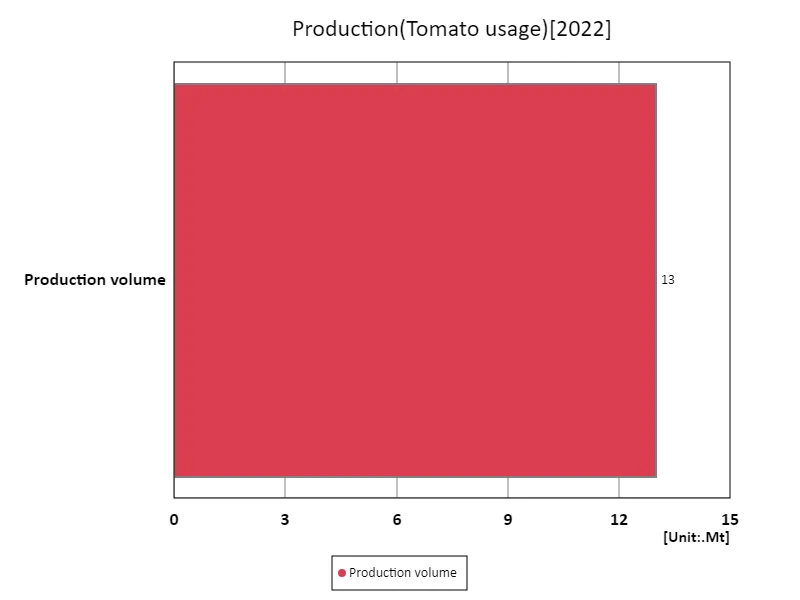

The maximum is 13Mt of Production volume, the average is 13Mt, and the total is 13Mt
Tomato usage
Tomato production in Turkey has been one of the important agricultural sectors since 1961 and has shown remarkable characteristics, especially in terms of production volume by use. According to data from 1961, tomato production was 13.2 Mt (million tonnes), the year in which production reached its maximum. These figures show that Turkey is a major tomato producing country in the world, and that demand for tomatoes will remain stable and high. Tomato production is largely divided into fresh consumption and processing, with the production of tomatoes for processing occupying a particularly important position in Turkey. Processing tomatoes are processed into products such as tomato paste, sauce and juice for supply to domestic and international markets. Tomato paste and sauce in particular play an important role as export items for Turkey, which contributes to the stability of tomato production. Looking at past trends, the cultivation area and production volume of tomatoes have been increasing year by year, with production particularly thriving in the Mediterranean coastal regions with their warm climates. Improvements in agricultural techniques and irrigation systems in Türkiye have also contributed to increased tomato yields. Even today, tomato production remains at a high level, with a stable supply meeting domestic consumption and export demand.
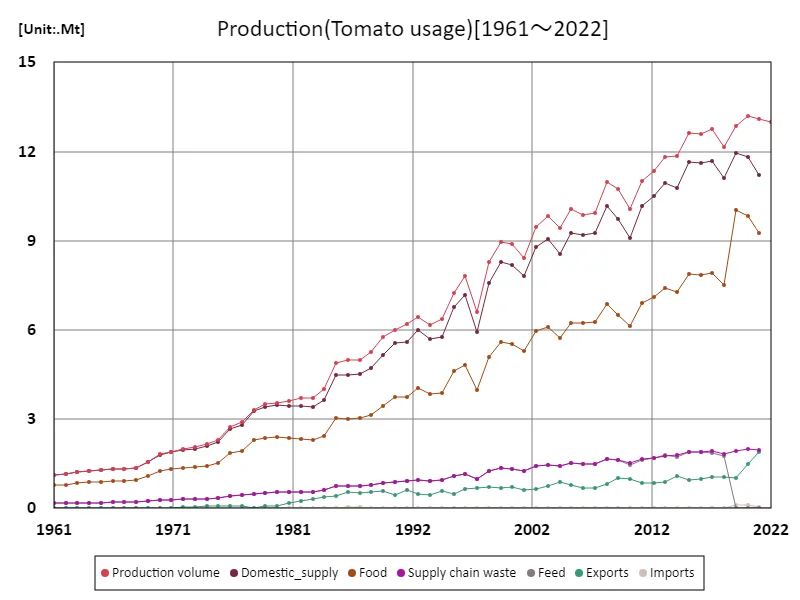

The maximum is 13.2Mt[2020] of Production volume, and the current value is about 98.5%
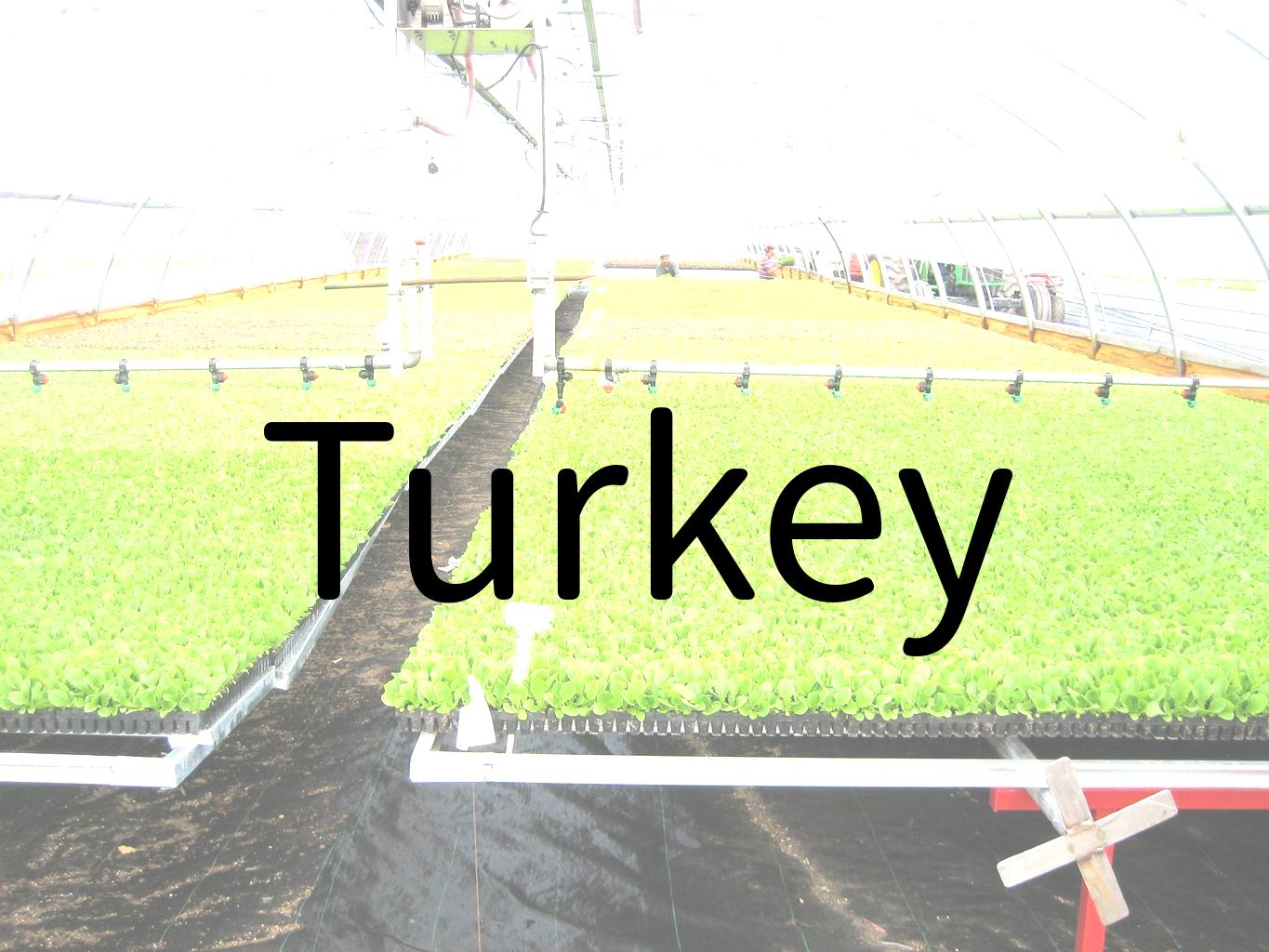


Comments